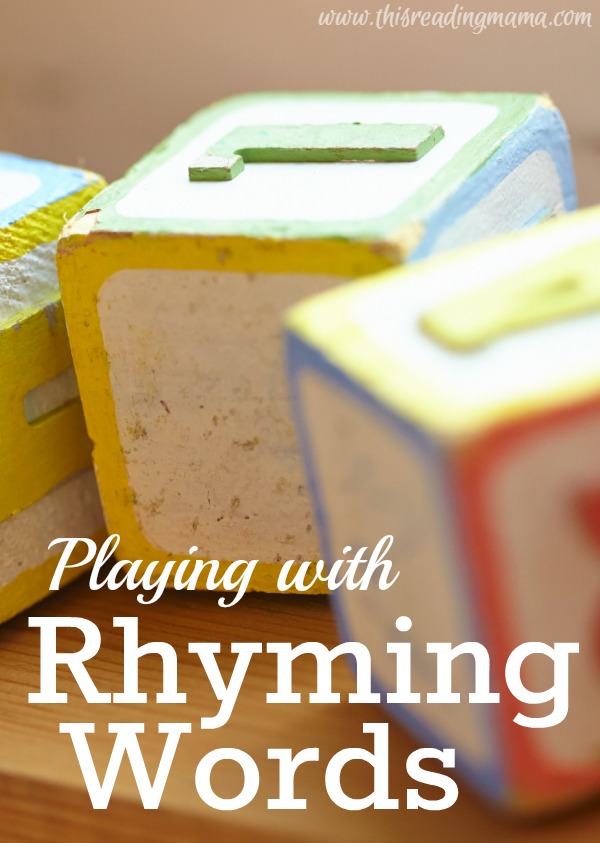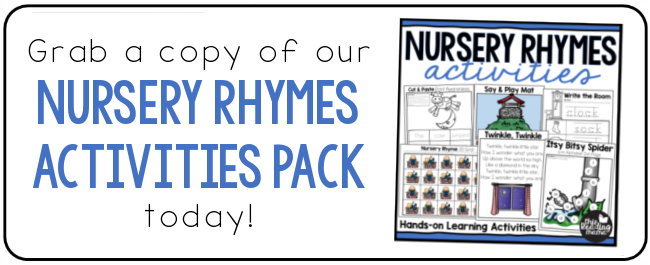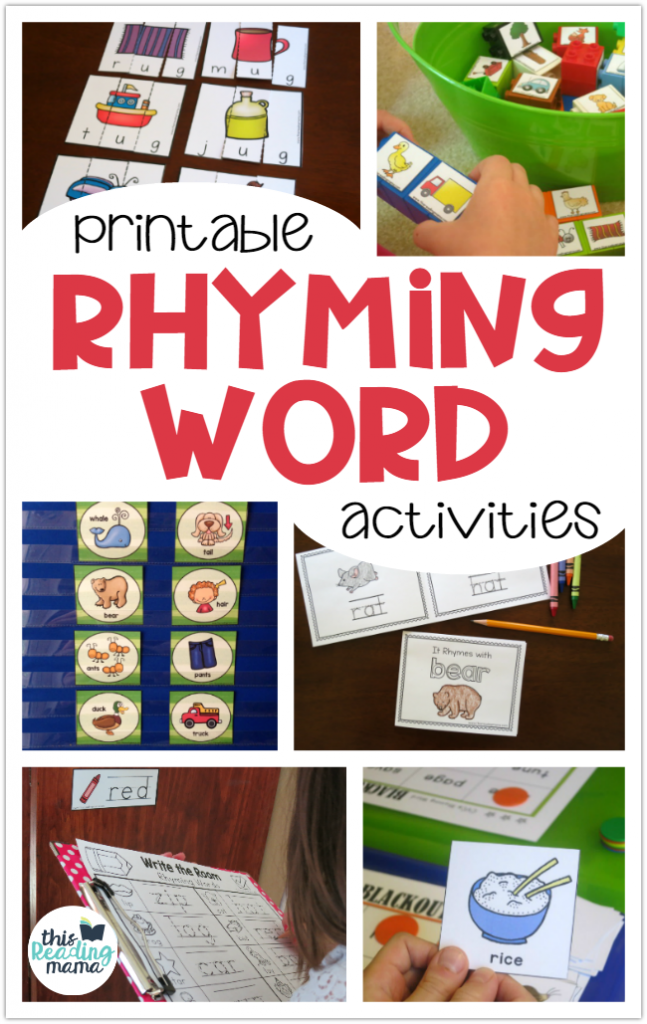Let’s talk about playing with rhyming words! This is the second post in my series called 3 Important Skills Needed for Reading.
*This post contains affiliate links.
When teaching and modeling phonological awareness, it is good to start with the larger units of sound (like rhyming words) and move to the smaller, individual sounds.
Playing with Rhyming Words
Book and Poetry Ideas:
- Use song lyrics- Raffi has some good ones, such as Down By the Bay or The Corner Grocery Store) Or integrate rhyming songs right into your routine!
- Poetry {We even have FREE poetry packs, perfect for young learners!}
- Nursery Rhymes {We also have some FREE Christian Nursery Rhymes}
- Rhyming picture books are a great way to let learners listen to rhyming words. I have two book lists for rhyming books we love: Rhyming Books for Kids and Rhyming Books that You Can SING!
- Inside our Rhyme Time Pre-K/K, you’ll find a couple of simple rhyming texts that kids can manipulate and interact with.
- Find all our rhyming word activities!
What Does Playing with Rhymes Sound Like?
1. Model it for your learner.
- Play with rhyming words throughout your day in silly phrases like, “Are you ready, Spaghetti?”
- While reading, point out rhyming pairs. “Hey, those two words rhyme. Car and star. Do you hear that they rhyme?”
- I used a song, sung to the tune of Mary Had a Little Lamb, when teaching rhyming words in the classroom. You could use any set of rhyming words to sing, “Pot and dot are rhyming words, rhyming words, rhyming words, etc.”
- Make up funny, little sentences with rhyming words and just be plain, old silly together. Example: “We see a bee sitting in a tree.”
- Make up rhymes with their names, such as “Ellie Belly” or “Silly Willy.”
You can find LOADS of printable rhyming word activities right here on my blog!
2. Let the learner try with support and feedback.
- Point out rhyming words when reading. After reading a rhyming pair, ask the child, “Did you hear two words that rhymed on that page?” Be ready to model if the child’s answer is “no”. What words were they?
- You: “I’m going to say two words. Tell me if they rhyme or not.” Start with pairs that are very different from each other such as can/phone. You can make it trickier by saying pairs that are similar in concept (chew/gum), that start with the same letter (can/cup), or that are multi-syllabic (candy/handy).
- You: “Let’s play a game. I’m going to say a word. You tell me a word that rhymes.”
- Read familiar texts and as you get to the rhyming part, let the learner fill in the missing rhyming word. “Goodnight bears, goodnight ________”.
3. Eventually, Kids can learn to do this independent of help.
- You’ll know your learner has reached independence when she can identify and create rhyming words herself. This may take a week or take months! It all depends on the child.
Enjoy!
~Becky



Good ideas!